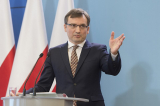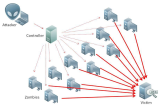
In the second quarter of this year, agricultural prices within the European Union experienced a notable deceleration in their growth. Eurostat, the EU's statistical agency,
attributed this slowdown to a stabilization of global markets following recent significant price surges.
The disruption caused by Russia's invasion of Ukraine had led to a surge in grain prices due to disruptions in grain supplies from Ukraine, a major exporter of raw materials for animal feed. This, in turn, had led to increased prices for animal feed. The soaring costs of energy and fertilizers had also contributed to inflationary pressures.
Eurostat reported that, on average, agricultural products in the EU were 2 percent more expensive in the second quarter of 2023 compared to the same period the previous year. This marked a significant decrease from the 17 percent year-on-year increase observed in the first quarter of 2023.
During the spring season, drought had been the primary driver behind price increases, impacting products such as citrus fruits, olive oil, and potatoes. Conversely, cereal prices had experienced a decline.
Interestingly, for the first time in nearly three years, prices for agricultural inputs, including fertilizers, soil enhancers, energy, and animal feed, registered decreases when compared to the prices of the previous year.








































